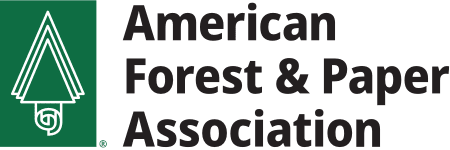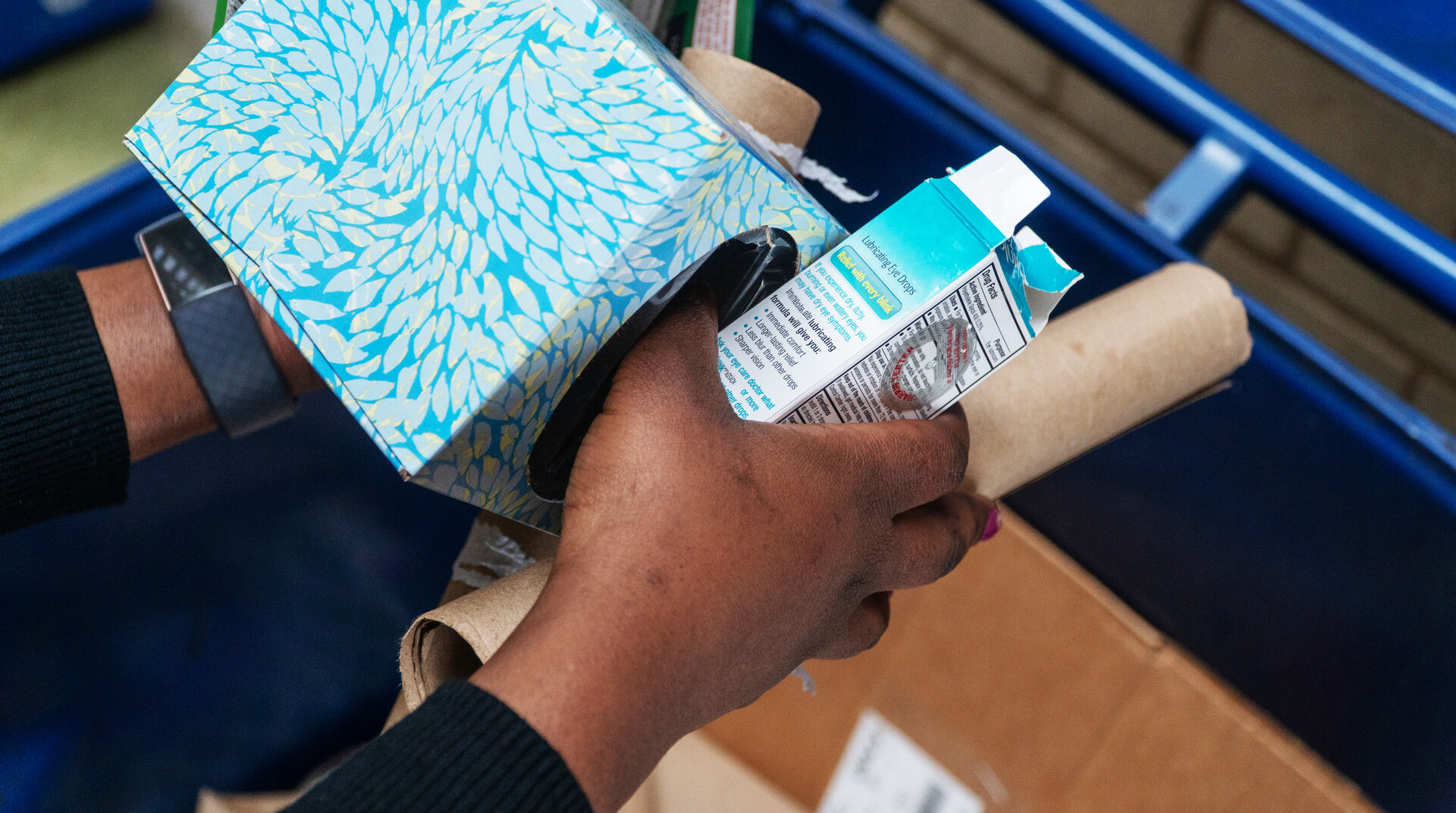
The Paper Recycling Process
Around 80% of U.S. paper mills use some recycled paper to make new products.
You put your recycling in the bin. You drop it at the curb or take it to your local drop-off. Then you wonder, is my paper actually getting recycled?
Yes! Recycled paper is used to make new products such as paper bags, toilet paper and all different kinds of boxes. For example, the box your cereal or toothpaste came in, bakery boxes for donuts and the trusty cardboard box arriving at your door.
In fact, about 80% of U.S. paper mills use some recycled paper to make new and innovative products.
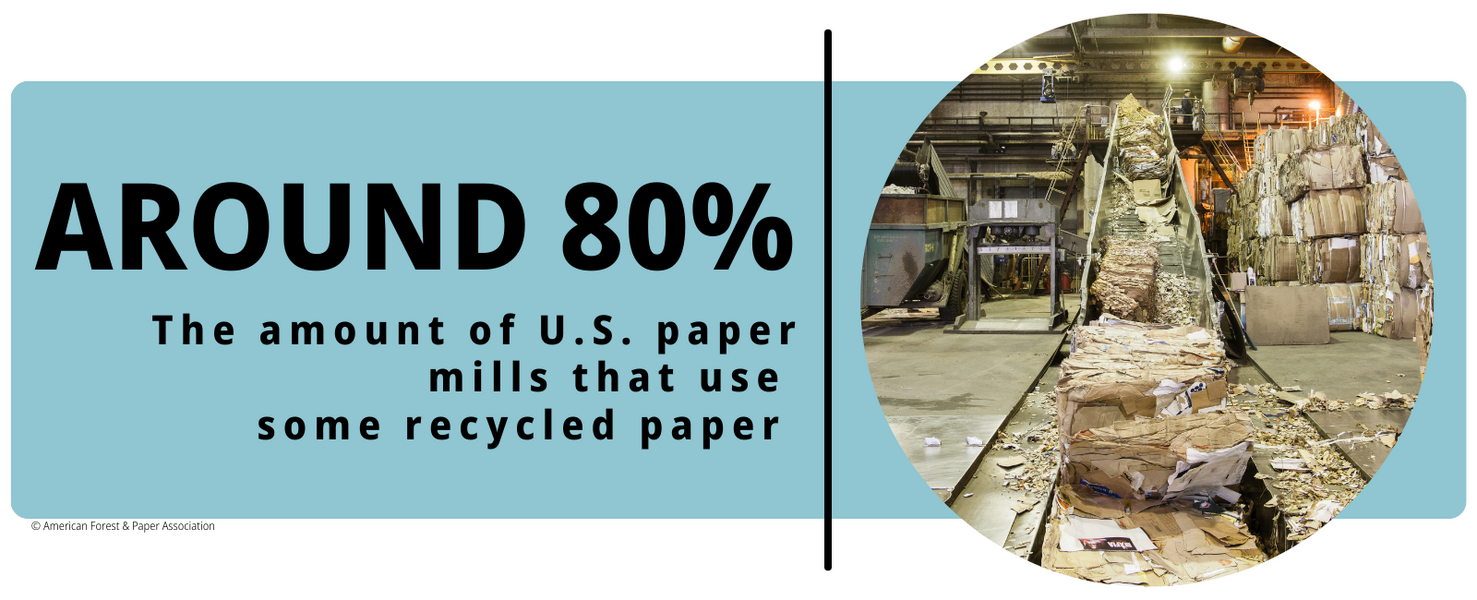
How Are Paper and Cardboard Recycled?
Step 1: Recycling Starts With You
It begins at any number of locations, including:
- Community curbside programs or drop-off centers
- Schools
- Offices
- Hospitals
- Commercial retail like big box stores
- Grocery stores
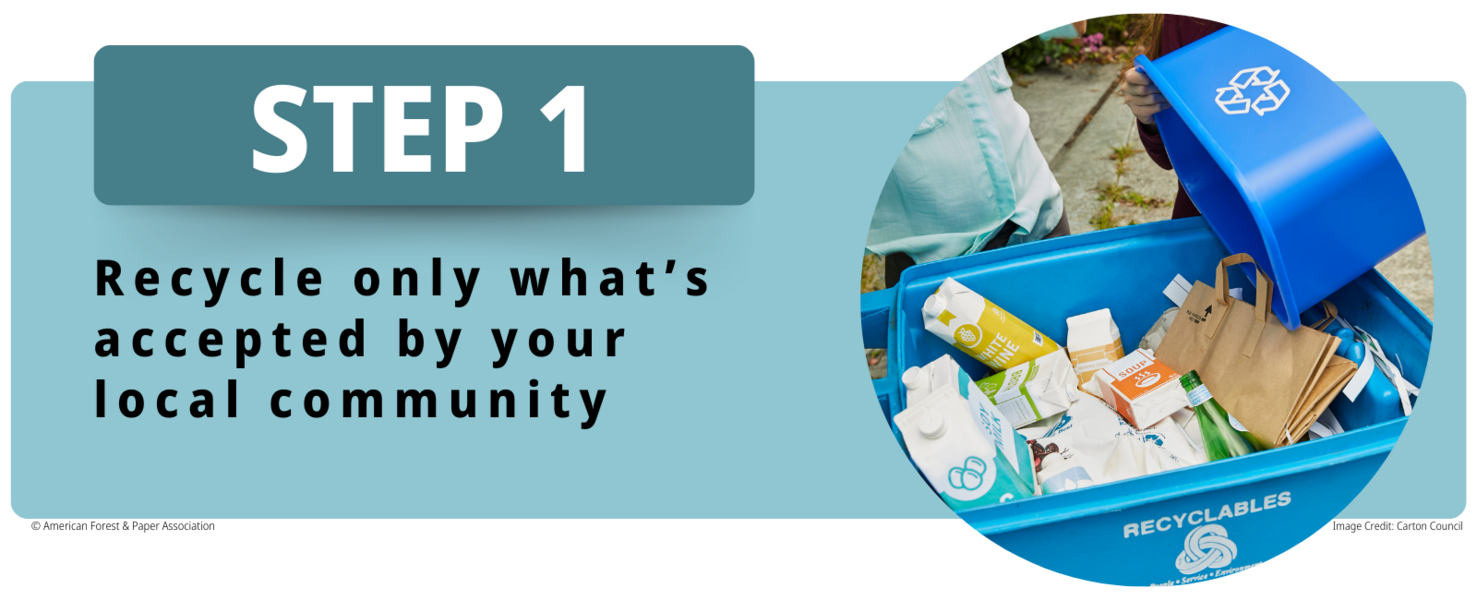
Recycling Tip
The recycling process starts with you. It's crucial to put only what's accepted for recycling in recycling bins. Tossing something in your recycling bin because you think it can be recycled leads to contamination.
What can you do? Check your local guidelines.
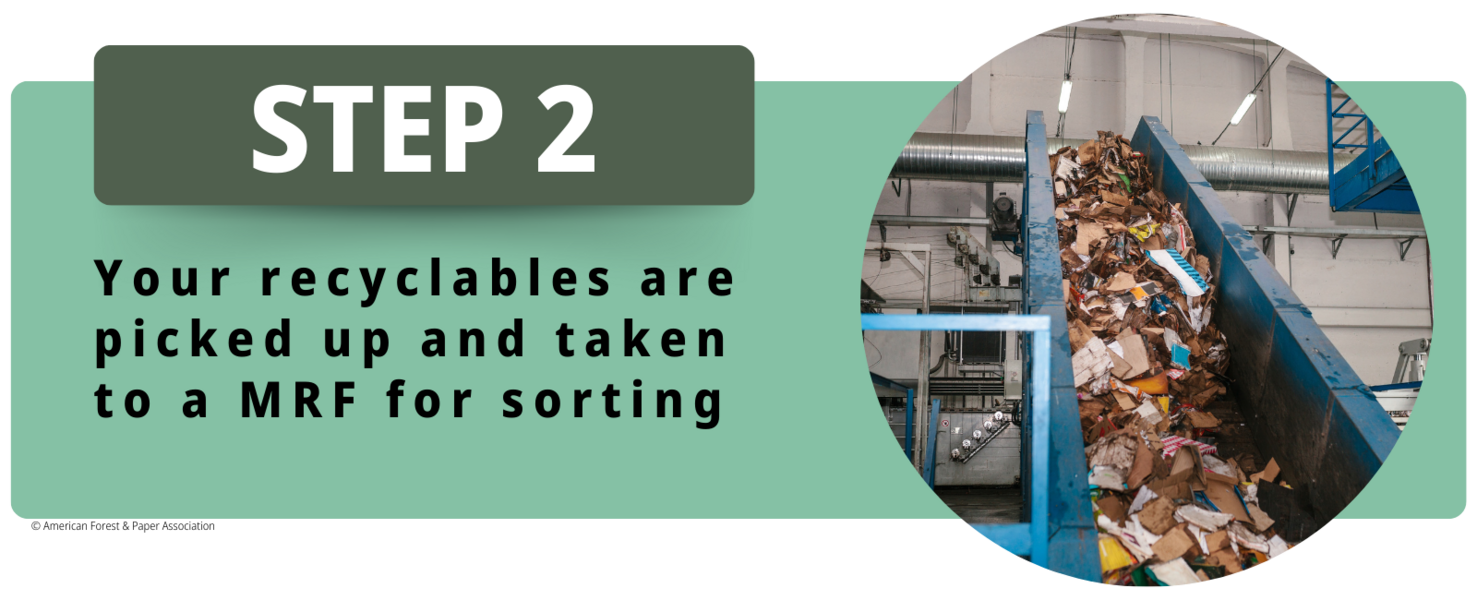
Step 2: Recyclables Go to a MRF
Your local hauler picks up your recyclables, like cardboard boxes, paper bags, cereal boxes and more.
After paper is collected, it goes to a materials recovery facility (MRF). It’s loaded on a conveyor belt and contaminants are removed.
Step 3: Baled and Shipped
Next at the MRF, paper and paper-based packaging are separated from other recyclable materials and baled. The bales are then transported to a paper mill where the recycling process really begins.
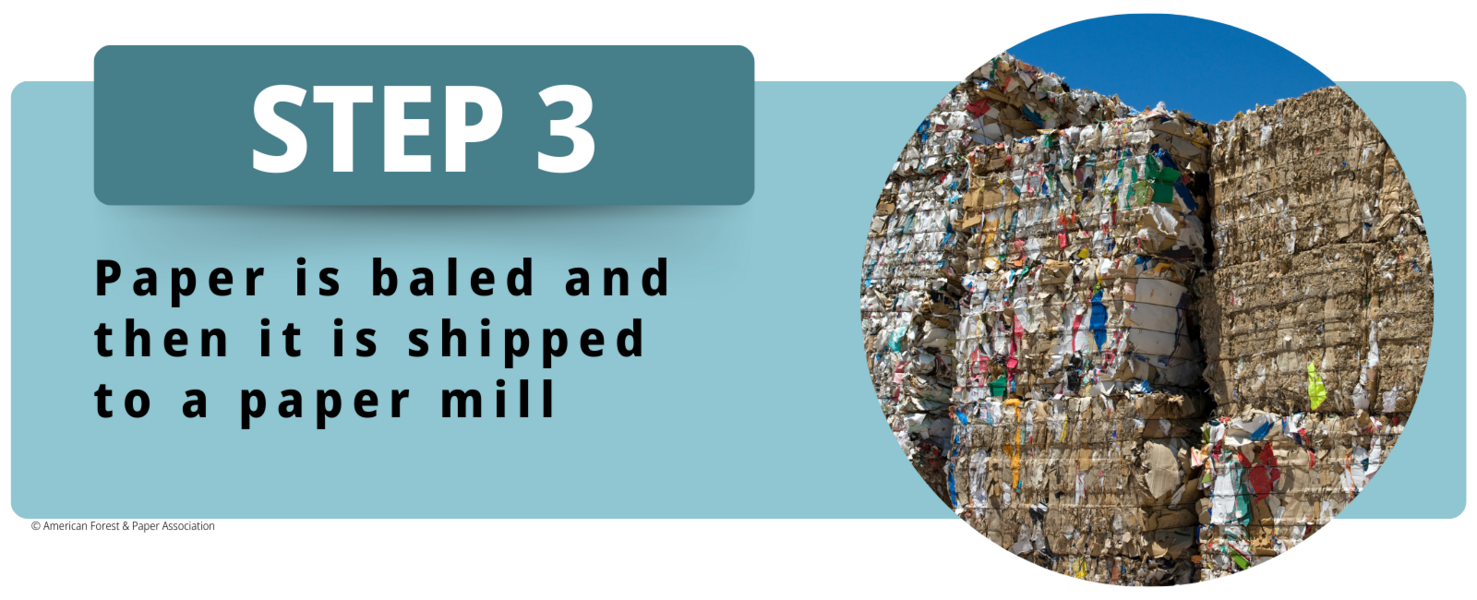
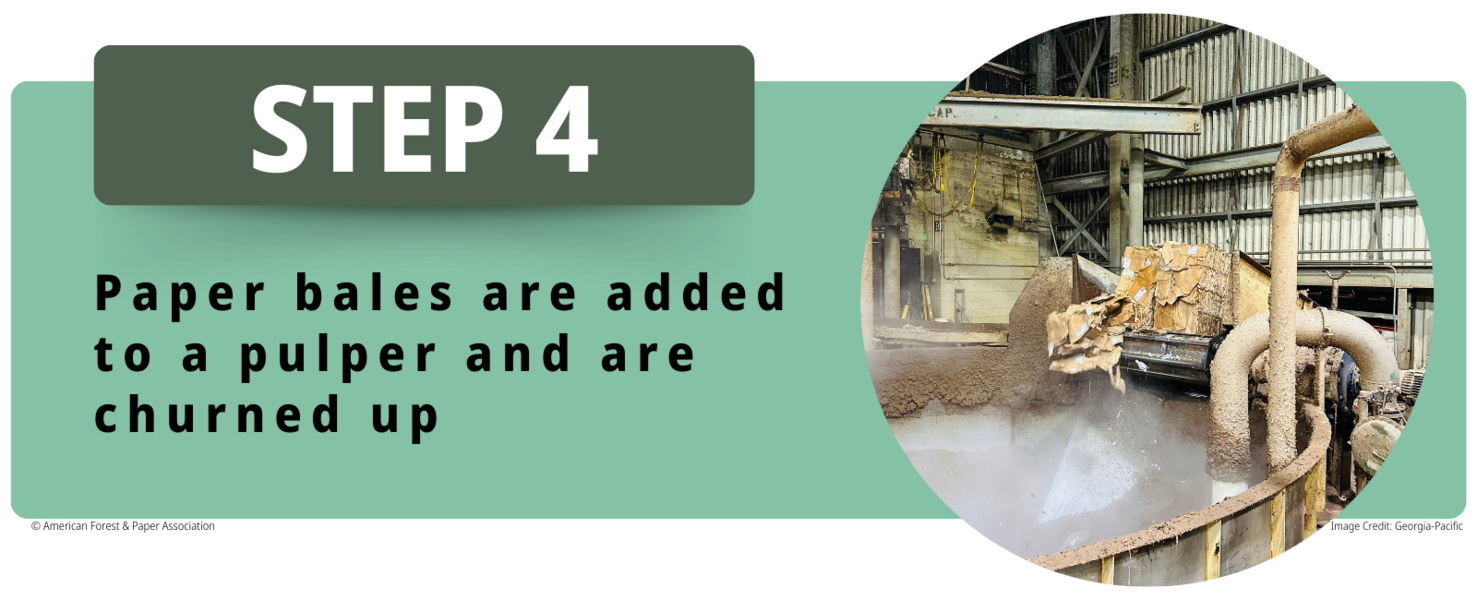
Step 4: Paper Mill Pulping Process
At the paper mill, the paper bale is loaded into a pulper, which looks like a giant blender. The paper is mixed with water and other ingredients, then it’s churned and broken down.
Things like tape, labels and staples are screened out.
Step 5: Recycled Paper is Turned Into Something New
From there, this slurry of fibers is screened for further cleaning. As it dries, it is formed into rolls of paper — newly recycled paper.
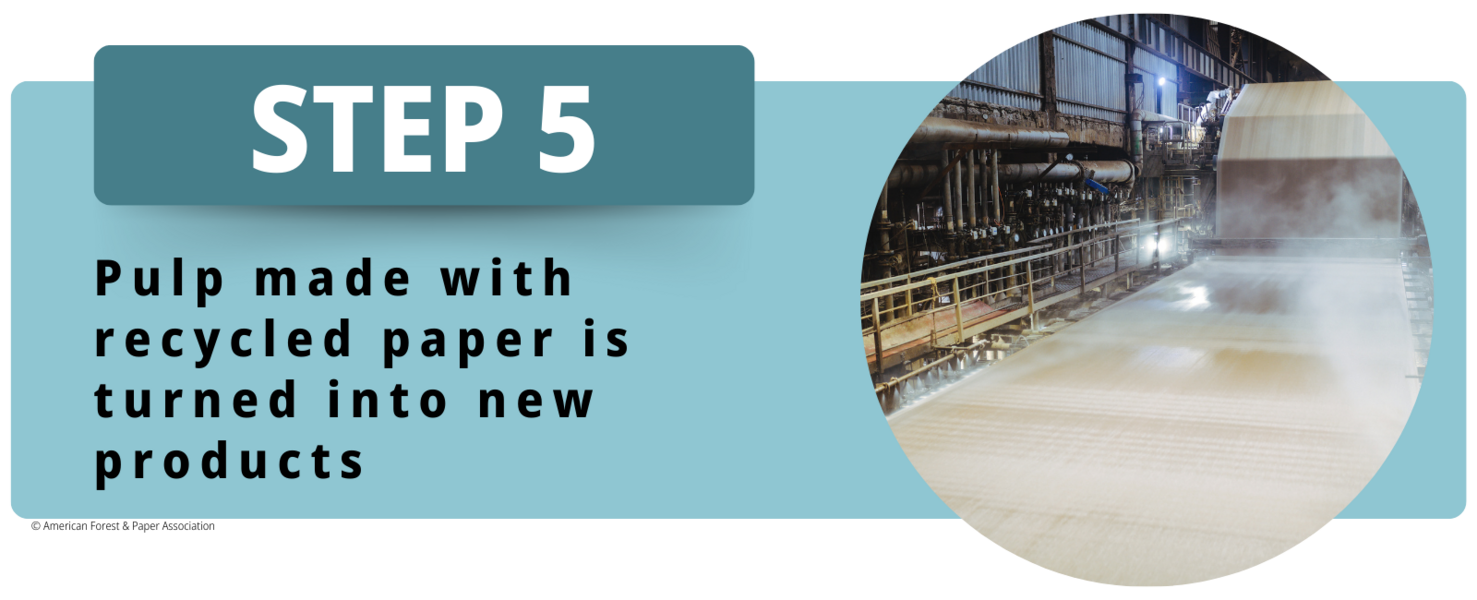
More Paper Recycling Resources
Interested in learning more about paper recycling? We've got you covered!
Decades of Commitment
Learn about the U.S. paper industry's decades-long commitment to improve paper recycling.
Innovative Recycling Solutions
Explore AF&PA member investments, innovative packaging, and projects to improve recycling technology.
Photo Credits: Carton Council and Georgia-Pacific
